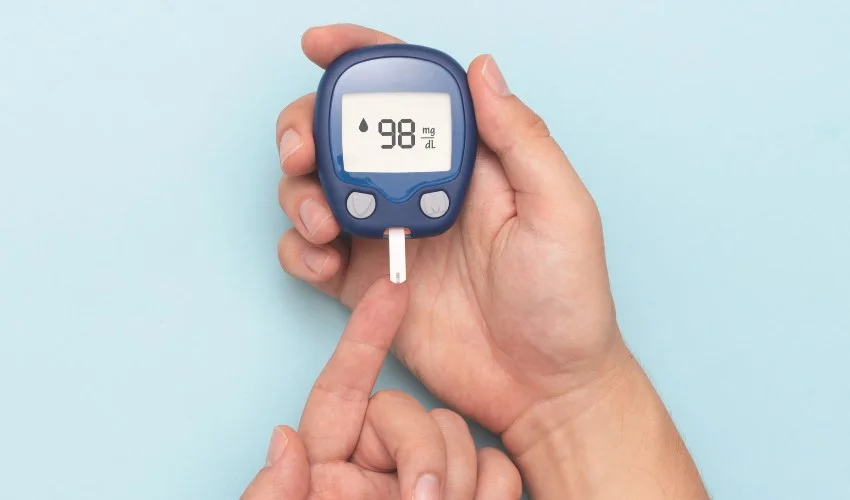Living with diabetes requires careful monitoring and management of blood glucose levels to prevent complications and promote overall well-being. A crucial aspect of this management is regular A1C testing. In this article, we will delve into the significance of A1C testing for long-term glucose management. We will explore what A1C is, how it is measured, its role in diabetes management, and why regular testing is essential for diabetic patients and their caregivers.
Understanding A1C: The Key to Glucose Control
Definition and Role of A1C
A1C, also known as glycated hemoglobin, is a measure of the average blood glucose levels over the past two to three months. It provides a comprehensive picture of long-term glucose control. The A1C test measures the percentage of hemoglobin in the blood that has glucose attached to it. Hemoglobin is a protein found in red blood cells responsible for carrying oxygen. When glucose levels are high, more glucose attaches to hemoglobin, leading to an increase in A1C levels.
How A1C Reflects Blood Glucose Levels
The A1C result is reported as a percentage, representing the average blood glucose level over a specific period. For example, an A1C result of 6% indicates an average blood glucose level of approximately 126 mg/dL (milligrams per deciliter). The higher the A1C value, the higher the average blood glucose level.
A1C Targets for Diabetes Management
The target A1C level may vary depending on individual factors, such as age, duration of diabetes, overall health, and the presence of complications. In general, the American Diabetes Association recommends an A1C target of less than 7% for most adults with diabetes. However, individualized targets may be set in collaboration with healthcare professionals based on a person’s unique circumstances.
The Importance of A1C Testing
Assessing Overall Glucose Control
Regular A1C testing provides a comprehensive assessment of overall glucose control over an extended period. It helps healthcare professionals and individuals with diabetes evaluate the effectiveness of their management strategies, including lifestyle modifications and medication interventions. By monitoring A1C levels, individuals can identify trends and patterns in their glucose control and make informed decisions about their diabetes management.
Identifying Long-Term Glucose Trends
A1C testing enables individuals and healthcare professionals to identify long-term glucose trends. It helps determine whether blood glucose levels are consistently within the target range or if there are fluctuations that need attention. By recognizing patterns of high or low A1C levels, individuals can adjust their diabetes management plan to optimize glucose control.
Guiding Treatment Decisions
A1C results play a crucial role in guiding treatment decisions for diabetes management. They provide valuable information for healthcare professionals to adjust medication regimens, modify treatment plans, and provide appropriate education and support. Regular A1C testing helps healthcare teams evaluate the effectiveness of interventions and make evidence-based decisions to improve glucose control.
Frequency and Timing of A1C Testing
Recommended Testing Frequency
The frequency of A1C testing depends on several factors, including the type of diabetes, current A1C level, treatment plan, and individual circumstances. In general, the American Diabetes Association recommends testing A1C at least twice a year for individuals meeting their treatment goals. However, those who have difficulty achieving or maintaining target levels may require more frequent testing, such as quarterly or even monthly.
Adjusting Testing Frequency Based on Individual Needs
Individuals with diabetes should work closely with their healthcare team to determine the appropriate frequency of A1C testing based on their specific needs. Some circumstances that may warrant more frequent testing include recent changes in medication or treatment, pregnancy, significant lifestyle changes, or suspected uncontrolled blood glucose levels.
The Role of Self-Monitoring Blood Glucose (SMBG)
Self-monitoring blood glucose (SMBG) is another essential component of diabetes management. While A1C provides an average glucose level over time, SMBG offers real-time information about blood glucose fluctuations throughout the day. SMBG results, when combined with A1C testing, provide a comprehensive understanding of glucose control. Regular SMBG can help individuals identify immediate adjustments to their treatment plan and enable them to make informed decisions regarding their diet, physical activity, and medication use.
Benefits of Regular A1C Testing
Early Detection of Glucose Management Issues
Regular A1C testing allows for early detection of glucose management issues. By identifying elevated or consistently high A1C levels, individuals and healthcare professionals can intervene promptly to prevent complications and further deterioration of glucose control. Early detection provides an opportunity to make necessary adjustments to the treatment plan, such as lifestyle modifications or medication changes, to improve glucose control.
Tracking Progress and Evaluating Treatment Plans
A1C testing enables individuals to track their progress over time. By comparing current A1C levels with previous results, individuals can assess the effectiveness of their treatment plans and identify areas that require improvement. Regular A1C testing provides a benchmark for evaluating the impact of lifestyle modifications, medication adjustments, or other interventions on glucose control.
Reducing the Risk of Long-Term Complications
Maintaining optimal A1C levels is crucial in reducing the risk of long-term complications associated with diabetes. Elevated A1C levels over an extended period can contribute to the development of complications such as cardiovascular disease, kidney disease, nerve damage, and eye problems. By regularly monitoring A1C and striving for target levels, individuals can mitigate the risk of complications and improve their overall health outcomes.
Achieving Accurate A1C Results
Standardization and Laboratory Accuracy
To ensure accurate A1C results, it is essential to use standardized laboratory methods for testing. Laboratories that adhere to established quality control measures provide reliable and consistent results. Healthcare professionals rely on accurate A1C measurements to make informed decisions regarding diabetes management.
Interpreting A1C Results and Understanding Variability
Interpreting A1C results requires an understanding of individual variability and other factors that may influence measurements. It is important to remember that A1C represents an average over time and may not capture short-term glucose fluctuations. Factors such as certain medical conditions (e.g., anemia), variations in red blood cell lifespan, or hemoglobinopathies can impact A1C results. Healthcare professionals consider these factors when interpreting A1C values.
Factors that Can Influence A1C Measurements
Several factors can influence A1C measurements, including age, ethnicity, pregnancy, medical conditions, and certain medications. Healthcare professionals take these factors into account when assessing A1C results. It is crucial for individuals to provide accurate information about their health status, medication use, and any other relevant factors that may affect A1C measurements during their healthcare visits.
Strategies for Improving A1C Results
Lifestyle Modifications and Behavior Changes
Lifestyle modifications play a significant role in improving A1C results. These may include adopting a healthy and balanced diet, engaging in regular physical activity, managing stress levels, getting adequate sleep, and avoiding tobacco and excessive alcohol consumption. By implementing these changes, individuals can positively impact their glucose control and ultimately improve their A1C levels.
Medication Adjustments and Treatment Interventions
In some cases, medication adjustments or treatment interventions may be necessary to improve A1C results. Healthcare professionals may prescribe oral antidiabetic medications or insulin therapy based on individual needs. It is important to adhere to the prescribed treatment plan, take medications as directed, and communicate any concerns or challenges experienced with healthcare providers to ensure optimal glucose control.
Collaborating with Healthcare Professionals
Collaboration with healthcare professionals is vital in achieving and maintaining optimal A1C levels. Regular visits with healthcare providers allow for comprehensive diabetes management, including ongoing evaluation of A1C results, adjustments to treatment plans, education on self-care practices, and addressing any concerns or challenges. Open and honest communication fosters a strong partnership between individuals with diabetes and their healthcare team.
Overcoming Challenges and Barriers
Emotional and Psychological Impact of A1C Results
Receiving A1C results can sometimes elicit emotional and psychological responses. Individuals may experience feelings of frustration, guilt, or anxiety if their A1C levels are not within the target range. It is essential to address these emotional aspects and provide support to individuals in managing their diabetes effectively. Healthcare professionals can offer counseling, education, and resources to help individuals cope with emotional challenges related to their A1C results.
Addressing Stigma and Fostering a Supportive Environment
Diabetes is often accompanied by stigma, which can impact individuals’ motivation and self-esteem. It is crucial to address and combat stigma by fostering a supportive environment that promotes understanding, empathy, and respect. Encouraging open dialogue, raising awareness, and connecting individuals with support groups or community resources can help reduce the negative impact of stigma on diabetes management.
Engaging in Self-Care and Seeking Social Support
Engaging in self-care practices and seeking social support are essential for individuals with diabetes and their caregivers. Self-care involves managing stress, prioritizing physical and mental well-being, and making time for activities that bring joy and fulfillment. Seeking support from family, friends, or support groups can provide a sense of community and shared experiences, making it easier to navigate the challenges associated with diabetes management.
Regular A1C testing plays a pivotal role in long-term glucose management for individuals living with diabetes. By understanding what A1C represents and why it is essential, patients and caregivers can take proactive steps towards better diabetes control. By working closely with healthcare professionals and implementing strategies to improve A1C results, individuals can reduce the risk of complications and lead healthier, fulfilling lives. Remember, monitoring and managing A1C is a shared responsibility that empowers individuals to take control of their diabetes and work towards optimal glucose management.




